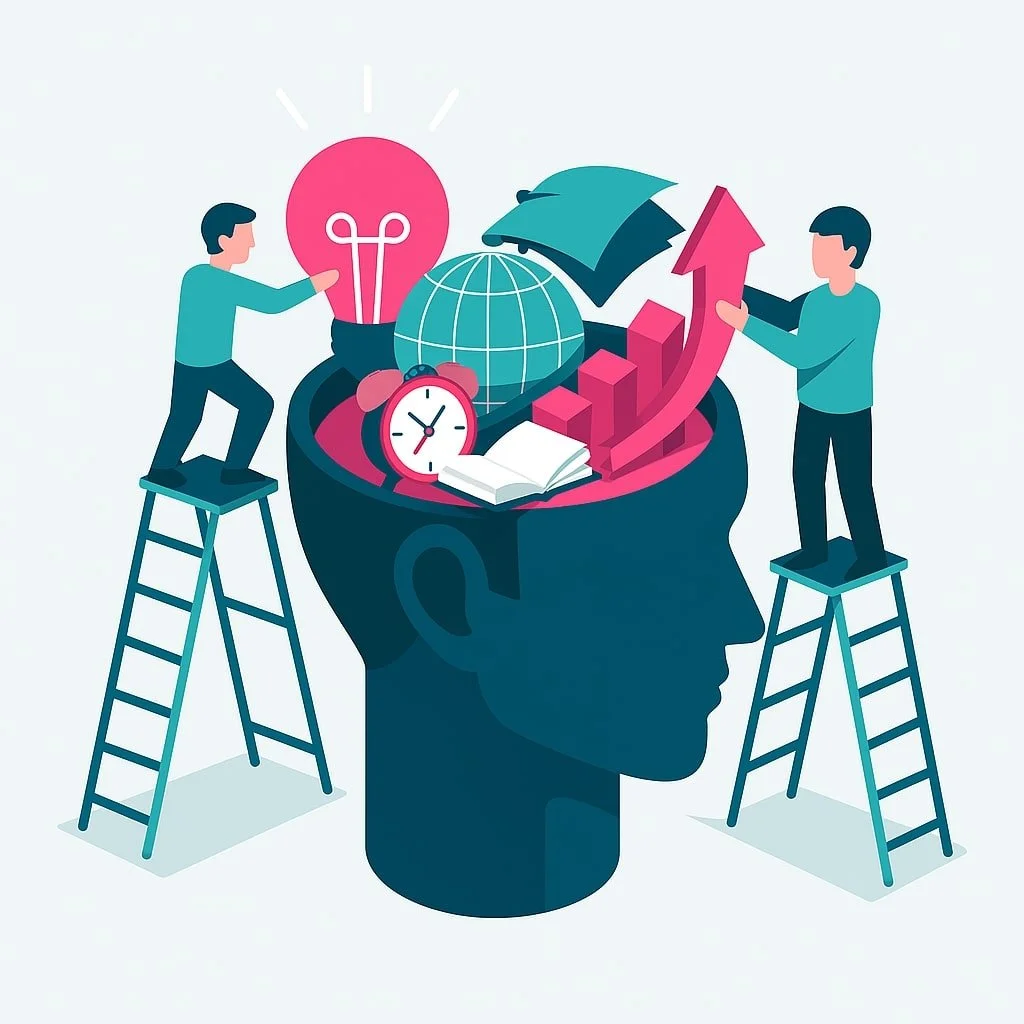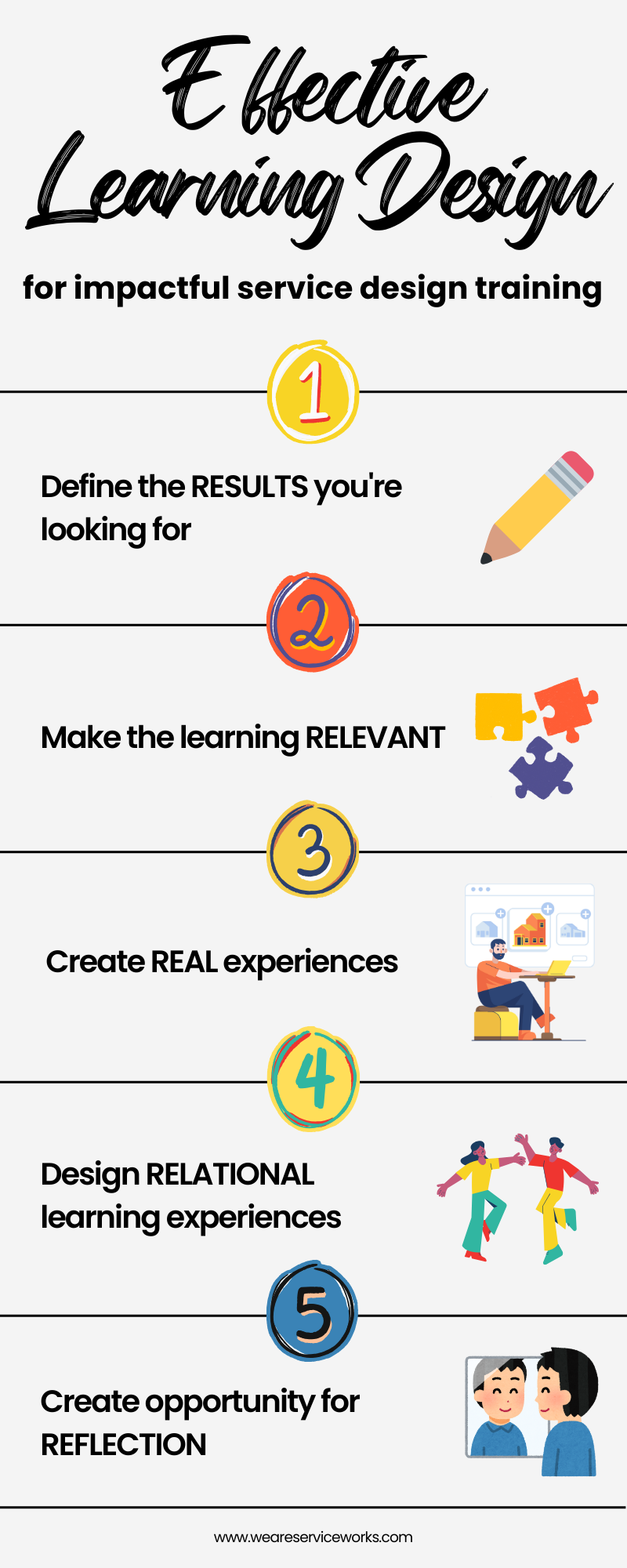5 lessons for impactful service design training success
How to design impactful service design training tailored for public services and non-profits
Designing learning experiences that actually stick isn’t easy.
It’s one thing to deliver content. It’s another for people to see the value in it, remember it, and apply it. Over the years, I’ve designed and delivered service design training in public services and non-profits, learning the hard way what works—and what doesn’t.
Whether you’re sharing learning with your team, facilitating workshops or designing learning programmes yourself, these five lessons might help you avoid a few pitfalls.
If you're commissioning training, these are also useful indicators to look for in the course design—signs that the experience will be engaging, relevant, and deliver real value resulting in impactful change.
When I first started out, I made many mistakes. Here are the five worst ones, along with some ideas for what to do instead.
1. Don’t start in the slides
I used to jump straight into PowerPoint.
It felt productive.
But it wasn’t.
I’d lose hours creating beautiful decks without a clear focus on outcomes.
Before I design anything now, I ask:
Who is this for?
Where are they now?
Where do they need to be?
What should they know, be able to do, and feel?
Do your research.
Talk to the people commissioning the training and the people attending.
These insights become your North Star.
Start by defining the RESULTS you're looking for.
2. Don’t hit people over the head with a service design hammer
I was once convinced the sheer brilliance of service design would win people over.
It didn’t.
Unless people grasp how it matters to them, it doesn’t matter how good it is.
Instead:
Make it relevant to their day job
Give learners problems to solve from the get-go
Use realistic scenarios that mirror their work context (or live challenges if you can, drawn from actual service settings)
I think of learning like building a jigsaw puzzle.
Sometimes, you pick up a piece of knowledge that doesn’t quite fit anywhere yet. It floats around in your mind, not connected to anything else. You might not even be sure why it’s important.
But you hold onto it.
Then later – maybe after you've built the edge pieces or found a few clusters that make sense together – you suddenly see exactly where that odd little piece belongs. Maybe you’re confronted with a challenge where your newfound knowledge will work wonders.
It clicks into place.
That’s when learning really sticks: when it has a home in your mental map. When it connects to what you already know and helps complete the bigger picture.
Until then, it’s just a piece in your pocket!
Make the learning RELEVANT by aligning it with the learner’s needs and goals.
3. Learning isn’t a download
For a long time, I thought I could transfer knowledge like copying and pasting a file.
Just explain things clearly; job done.
But real learning happens through doing, especially with service design, which is inherently collaborative and practical.
We make space for learners to practise, make mistakes, and try again.
Whether it’s role-playing, solving a live challenge, or working on a scenario, experiential learning sticks.
It’s the difference between reading about how to play football and actually playing.
Want to see what this looks like?
Run our mini design cycle workshop with your colleagues to help them learn about user-centred design. 👇
Create REAL experiences.
4. Build relationships, not just knowledge
I once had a participant say, “I don’t mind letting myself down, but I don’t want to let my team down.” That moment changed how I design training.
I’ve learned to intentionally:
Create trust among participants
Build in peer support and coaching
Focus on collective learning, not just individual takeaways
As a facilitator, you’re not the only relationship that matters. Make space for learners to connect with each other.
Those connections often outlast the training.
Design RELATIONAL learning experiences.
5. Reflection is where the magic happens
I used to believe “once and done” was enough. Share the information, tick the box and move on. But without time to reflect, learning doesn’t stick.
What actually works?
Space between sessions (for people to 'marinade' in the thinking)
Structured reflection
Revisiting key ideas and
Imagining their future selves applying the learning.
For example, 3 x 2.5-hour sessions spread over three weeks trumps a full-day workshop.
We use tools like Liberating Structures to help people process what they’ve learned. Action plans, peer feedback, and journalling go a long way.
Create time and opportunity for REFLECTION.
We don't have meaningless KPI's that we’re required to meet.
Our measure of success is whether people apply their learning to their work.
Apparently, there is an acronym for this!
NPC - Noticeable Practice Changes - AKA observable shifts in behavior or practice following learning interventions.
And what is the point of learning if it doesn’t result in learning that sticks?
Ready to build service design skills that stick?
If you're looking to:
Tackle real-world challenges
Upskill your team
Build lasting service design capability
Our programmes help people in public services and non-profits apply what they learn immediately.
Sign up for our newsletter to get more hands-on resources, tips and tools.
Want to explore our service design courses? Here’s your chance! 👇
Like this post? Share it with your team or someone else designing learning experiences.



